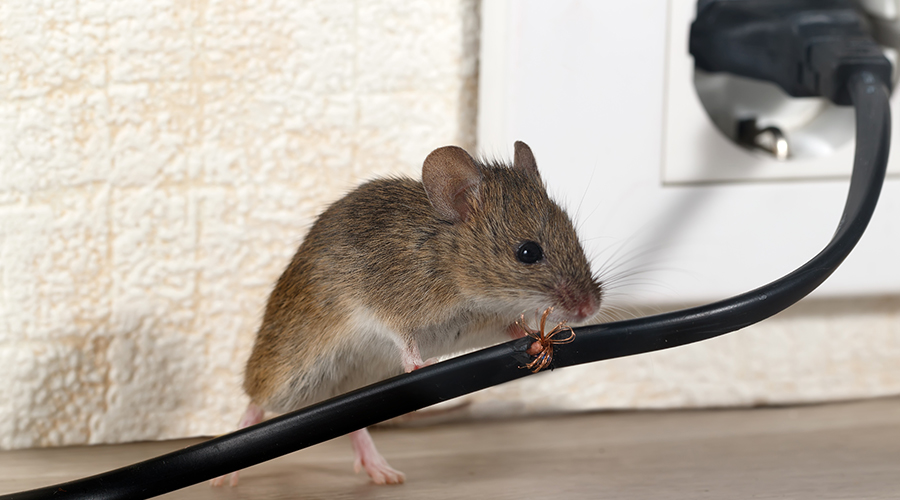
Return-to-Office: Understanding Why Occupants Come to the Office
Facility managers are essential in providing a consistent and rewarding experience for in-person employees. November 14, 2024
By Jeff Wardon, Jr., Assistant Editor
Facility managers and organizations alike have been grappling with getting occupants back in the office since the end of the COVID-19 pandemic. Some have found success, but there are those who are still struggling with enticing their employees to come in person. Given this, creating a somewhat consistent experience for employees and understanding what drives them to come in are critical to these “return-to-office” efforts.
To better understand this issue, Alana Dunoff, strategic facility planner at AFD Professional Services, LLC, will present the session “Coffee and Culture. And Other Things That Matter In Today's Workplace” at NFMT 2025 in Baltimore, from March 25 to 27, 2025.
FacilitiesNet: How can facilities managers create a consistent in-person experience for occupants with such varied work schedules, from those on-site every day to those coming in only occasionally?
Alana Dunoff: I think that the big picture in this new moment where you can have people there who are mandated five days a week, people who only have to come in two or three days a week, or people who don't have to come in at all, the truth is, you’re never going to have 100 percent equity. It’s sort of impossible at that moment to know that you’re going to be able to provide fully consistent services. However, I think the better question is how we rethink the services we are providing so that we can meet people where they are and what they need from us.
That means that companies and facilities managers must spend some time rethinking occupant services, such as the things that they’re providing, and understanding if they’re indeed what they should be providing. Services is probably one of the biggest challenge areas. In the case that I’ve been working through, and some things I've been seeing in food service is so interesting. This is because the people who are on campus or are there five days a week feel like they’re getting punished in some way, because there’s a level of food service availability that has decreased. So, you can’t have a salad bar anymore if people don’t come in every day. Also, if the people who come in every day are so few, how do you support them? If they want salads and don’t want to have cold sandwiches anymore, and so I think it’s an opportunity to completely rethink what you provide and how you provide it. That is, to make sure that it may not be what it was before, but that at least they’re getting what they need.
People who come to campus shouldn’t feel like they’re being punished because they’re coming to campus, because of that decrease of services that are provided. So, while exploring the occupant services that you have – be willing to shift and change them - because work is changing and shifting. To me, that is the secret sauce in this process. You have to be able to look at what you're doing and acknowledge that we may have to do it differently. Maybe the food services you’re providing, like if you had a cafeteria, maybe having a cafeteria isn't the right way to go anymore. Maybe it’s a different kind of food service process that allows people to get what they need.
FacilitiesNet: What are the key drivers that encourage employees to come into the workplace, and how can facility managers strategically support these reasons?
Dunoff: First and foremost, people come into the office to work, and that question around the work that they’re doing acknowledges that there’s a lot of different types of work that we do at any given time. Some of it’s very individual work and some of that work is very focused on working with other people to solve a problem or to brainstorm something.
So, if you’re brainstorming, you’re having those creative moments, and you want to have those continue to be done better and in person. It doesn’t mean that those things can't be done virtually or in a hybrid setting, however, when we people say they’re coming into the office, it’s that kind of work that they’re doing. Sometimes being at home feels disconnecting and so people come in to have that time with other people. They also enjoy the quiet moments or times they can get other things done when they’re not in the office.
I also think another driver that you’re starting to see a little bit more is a sense of belonging to a company or wanting to feel connected to that company. That’s about the culture of the company, how they work and how they are.
That sense of belonging is the reason why people come in because it feels good to be around other people but to have intention around it. That’s the key around those drivers — whatever that intention is like, it just feels good to bring a group together. We forget when we are together how much work can be done. So, what I found in talking with leaders and managers is that those intentional moments could be a training module or having a guest speaker. Then the outcome from those meetings is always unexpected. There's always something that they didn't know was going to happen, typically pretty positive, because people are together, and that's the value. Those should be the drivers, and that doesn't have to happen all the time. However, when there’s intention behind it, it can add a lot of value.
To learn more about what drives employees to come into the office, be sure to check out Dunoff’s session at NFMT 2025 this coming March. Register for NFMT here.
Jeff Wardon, Jr., is the assistant editor for the facilities market.
Next
Read next on FacilitiesNet












